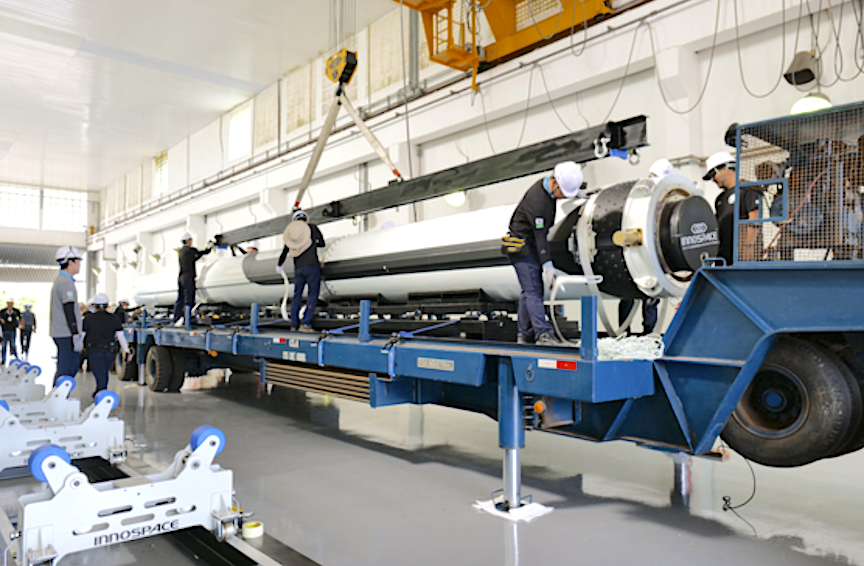
INNOSPACE, a South Korean private spaceflight startup for small satellite launch vehicles, set December 20th (Brasilia Time, BRT) as the first rocket engine test flight of the HANBIT-TLV, privately made test launch vehicle.
HANBIT-TLV will launch Tuesday, December 20th at 06:00 BRT from the Alcântara Launch Center in Brazil if there are no issues on the preparation process and weather conditions. The launch window is the period between December 14 and December 21.
HANBIT-TLV flight model left Incheon International Airport, December 2nd (UTC), and arrived at the Alcântara Launch Center via Marechal Cunha Machado International Airport and in Brazil, December 3rd (UTC).

INNOSPACE and its supplier HANYANG ENG team at the Alcântara Launch Center in Brazil are carrying out final preparations ahead of the upcoming the first test launch of HANBIT-TLV. The company recently installed its portable Coalesed Launch System (CLS) and completed assembling the HANBIT-TLV flight model and vertical standing test. HANBIT-TLV will spend a dress rehearsal including conducting a full launch countdown approximately two-days before the launch date.

INNOSPACE is developing a series of HANBIT small satellite launch vehicles. The HANBIT-TLV, a test launch vehicle, is to validate the first stage engine of HANBIT-Nano, which is a two-stage small satellite launcher capable of carrying a 50kg payload. HANBIT-TLV is a 15-ton thrust single stage hybrid rocket with a height of 16.3m, 1-meter-diameter, and weight of 8.4-ton.
Additionally, an agreement signed with the Brazilian Department of Aerospace Science and Technology (DCTA) under the Brazilian Air Force on May 3rd, the HANBIT-TLV will carry onboard the payload SISNAV, an inertial navigation system being developed by DCTA and other institutions during a test flight. SISNAV has weight of 20kg and 310 × 400 × 280 mm3 in size.
INNOSPACE will verify the flight performance focusing on the normal operation and stable thrust of the hybrid rocket engine, and the success of the engine verification will be finally confirmed based on the results of a comprehensive analysis of engine and flight data obtained after launch.
